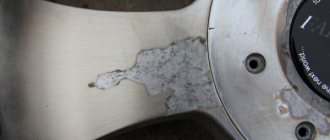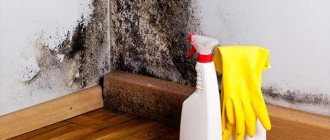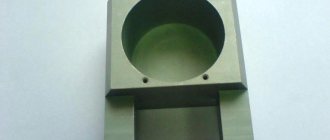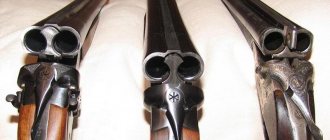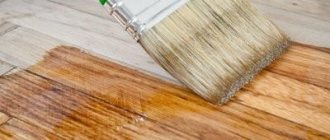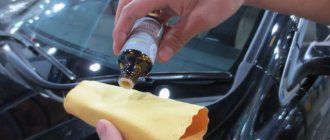How to treat metal from rust
We have all encountered in life the corrosion of metal objects - rusty spots. Corroded locks, bolts and tools not only look unattractive, but are also unusable. To date, many drugs have been invented to combat corrosion damage to metal objects.
When interacting with water and oxidation, the metal is destroyed and rust is formed. Let's look at the advice of professionals on how to treat metal against rust and prevent its further occurrence.
Read also: Device for rolling fire hoses
When not to use anti-corrosion paint
Although anti-corrosion paint for metal has many advantages, it also has some disadvantages. Among them, we should highlight the ban on processing equipment that will be used at temperatures above 150°. Application of coatings is prohibited on structures whose surface will come into contact with drinking water.
Preventing rust
Prevention is considered the main stage in the fight against corrosion damage. The simplest and most effective way to prevent the appearance of rust stains is considered to be painting metal objects and surfaces, which will not only update the appearance of your interior, but also create additional protection from moisture and oxygen.
Recommendations for painting structures for protective purposes:
- before you start painting, you need to clean the old layer with a spatula and sand the rust-affected areas with a grinder or sandpaper;
- treat the surface with a degreaser;
- Apply an anti-corrosion primer to the metal for the appropriate type of metal structures;
- Perform permanent painting of metal surfaces in clear weather so that moisture does not get under the dye;
- You can use both oil and enamel dyes, but pay attention to their properties and resistance to high temperatures;
- It will be more convenient to treat a flat surface with a soft roller, and in hard-to-reach places with a long brush.
An alternative is to use enamel primer, which can prevent rust stains and provide structural protection.
Scope of use and characteristics of anti-corrosion paints
One of the most popular means for protecting metal from corrosion is Hammerite rust paint. It allows you to avoid labor-intensive and expensive work, which is not always justified. The above-mentioned quick-drying one-component composition is made on the basis of epoxy-modified synthetic resins, to which anti-corrosion pigments are added. This mixture can be used as a finishing coating, which will have high decorative properties. These anti-corrosion paints for metal after drying acquire a glossy or semi-matte sheen. And the main advantage of this coating is its ability to resist pollution, because it is they that play an important role in the formation of rust. This composition is used in private construction, as well as in industrial production. For example, it can be used to protect roofing systems, water pipes, agricultural tools, machines and equipment.
Using a rust converter
Neutral rust converter is in great demand due to its natural composition and the absence of harmful chemical components. First, you need to remove loose rust, then stir the product until smooth and apply it to the surface with a brush or spray for a certain period of time in accordance with the instructions for use. When the red color of the spots changes to a black tint, this will indicate the successful breakdown of rust. If the corrosion layer is thick, you will need to apply the product several more times. After the signs of corrosion disappear, leave the structure to dry completely.
As a result of exposure of iron to air and other substances, it oxidizes. There is an electrical, chemical, electrochemical reaction, after which rust is formed. Various methods are used to clean rusty iron and further protect it.
Features of using Hammerite paint
The above-described metal paint with anti-corrosion properties prevents the negative effects of water on the surface. The wetting properties of the mixture make it possible to apply even on unprepared substrates. After drying, products can be used over a fairly wide temperature range, which varies from -20 to +80°. This paint is resistant to degradation even when exposed to ultraviolet rays, which is why it can be used in humid and hot climates.
Rust control methods
Iron corrosion damages industrial equipment and causes many losses. To prevent this from happening, you need to properly treat the surface with high-quality paints and varnishes. The abrasion-resistant cleaning method is considered the most effective.
Read also: DIY mini seeder
There are 3 ways to prevent rust stains:
To prevent corrosion, structural stainless steel is used. When equipment is designed, all parts are protected from the effects of a corrosive environment with adhesives, sealants, and elastic gaskets.
With the active method, the parts are exposed to an electric field using equipment that supplies direct current. To increase the electrode potential of iron products, a suitable voltage is selected.
Sometimes sacrificial anodes taken from more active elements are used; this method is called passive. Metal parts are protected by a special anti-corrosion coating.
Oxygen corrosion occurs on tin-plated parts. Paint, enamel or polymers are used to protect exposed metal from water and air. Often steel is coated with tin, nickel, zinc, and chromium. The base material remains protected even after partial destruction of the protective layer. Zinc has a more negative potential, so it rusts first.
Tin cans are made from tin. When the tin layer is deformed, the iron quickly rusts, since the potential for such protection is more positive. The metal is protected from corrosion by chrome plating.
Zinc and magnesium have a more negative potential, making them excellent for coating metals. This method of protection is called cathodic; it prevents the development of a corrosive coating on many products. Zinc plates are installed on marine vessels, underground communications, and other equipment to protect the hull.
An oxide film is formed on the zinc and magnesium layers, which inhibits the destructive process. If you add a little chromium to the steel, the products will be protected.
Thermal spraying is used to combat corrosion and helps restore various equipment. Using special equipment, another metal is applied to the surface, resulting in corrosion occurring slowly.
Metals that are to be used in an aggressive environment are treated with thermal diffusion zinc coating. This method provides the greatest protection; the coating does not peel off or chip after impact or deformation.
The metals are treated with cadmium, which protects well even in sea water. Cadmium is highly toxic and is therefore not used often.
Spray gun and painting with paints and varnishes
Let's start with the popular painting method - spraying with a spray gun or otherwise - a spray gun.
There are three types of spray painting:
1. Airless.
The paint pressure in this process is a hundred times stronger than the water pressure in a home tap. Emerging from the spray gun nozzle, the paint is instantly sprayed, forming a cone or “torch” that is directed onto the part. Only slightly slowed down by air, the paint particles are literally “driven” into the surface to be painted.
2. Air.
The paint is introduced into a stream of air, forming an air mixture due to vortex processes (turbulence). This cocktail is directed onto the part, covering it with a smooth, beautiful and uniform protective layer.
In this case, the pressure is much less, but along with the working torch of paint, fog is formed from its smallest drops. This increases the consumption of the composition and requires much more expensive measures to protect workers and the environment than with the airless method.
3. Combined method.
The paint is ejected under a pressure of about 20-30 atmospheres, and compressed air is additionally introduced into its torch. Thanks to this, the coating is more uniform, and no harmful fog is formed.
Treatment with chemicals
Everyone understands why iron parts rust. We list the categories of chemical reagents that help get rid of corrosive formations:
- Rust converters.
- Acids.
Acids are solvents consisting of orthophosphates that help restore rusting products. The technology for using acid is simple. The metal must be cleaned of dirt and dust and treated with acid using a silicone brush.
The chemical interacts with the damaged surface for 30 minutes, after cleaning the product is wiped dry. The acid should not affect the skin, eyes, or mucous membranes, therefore, during such treatment it is necessary to wear special clothing. The orthophosphate mixture has the following advantages:
- Gentle effect on iron.
- Removing rusty deposits.
- Preventing new corrosion.
The entire surface of the metal product is treated with the converter. Active substances create a protective anti-corrosion layer that prevents its development.
- Berner - for protecting bolts and nuts that are difficult to unscrew.
- BCH-1 neutralizes rust on damaged areas and can be wiped off with a regular rag.
- "Zinkor" cleans from corrosion and prevents further destruction.
- B-52 is a gel converter that helps get rid of different types of rust stains.
- SF-1 - it is used to process cast iron, zinc, aluminum, it prolongs the service life of iron objects for a long time.
Read also: Dimensions of gas stoves for the kitchen
Most anti-corrosion compounds are made from toxic components, so you need to protect yourself with respirators, gloves, and goggles.
Characteristics of Rzhavostop enamel primer
If you need anti-corrosion black metal paint, then you may prefer Rzhavostop enamel primer. Its application can be done directly over rust, but the mixture is intended for painting cast iron and steel surfaces with residual rust remaining. This includes metal structures, gratings, fences and metal garages. This mixture can be used to paint plastered surfaces. For 20 m2, one kilogram of the mixture will be enough, which is true if the application is carried out in one layer. Depending on the characteristics of the surface, the consumption can be increased, then one kilogram will be enough for only 10 m2. The drying time of this composition is 15 hours. The mixture can be tinted with pastes, but their addition is possible in a volume of no more than 10%. After drying, the surface acquires a glossy shine. The paint is universal, as it can be applied indoors and outdoors. Additionally, there is no need to use a primer at the initial stage, which also applies to the rust converter. High protective properties will be maintained both on clean metal and on rusty surfaces. It is noteworthy that “Rzhavostop” can be applied to the remains of old paintwork.
Application of anti-corrosion compounds
Rocket Chemical company supplies high-quality anti-corrosion products to the domestic market. We list the most popular products:
- Potent inhibitor. After treatment, iron objects do not rust for a year in an aggressive environment.
- Lithium grease – for protection and prevention. It is used to process door hinges, iron cables, chains, and various mechanisms. The protective layer is not washed off by rain.
- Silicone sealant covers metal products with plastic or rubber elements.
- Anti-corrosion spray - for treating hard-to-reach areas. The sprayer allows for deep penetration into various mechanisms. Prevents the recurrence of rusty plaque.
- The spray for removing rust stains is made from non-toxic elements. It is used to clean building materials, household appliances, knives, etc. – valid for 5 hours, after which the item is wiped or washed.
Iron is most resistant to corrosion in conditions of minimal humidity.
Types of corrosion
As already mentioned, there are many criteria for the classification of corrosion processes. Thus, corrosion is distinguished by the type of distribution (continuous, local), by the type of corrosive medium (gas, atmospheric, liquid, soil), by the nature of mechanical effects (corrosion cracking, Fretting phenomenon, cavitation corrosion) and so on.
But the main way to classify corrosion, which allows us to most fully explain all the intricacies of this process, is classification according to the mechanism of its occurrence.
Based on this criterion, two types of corrosion are distinguished:
- chemical
- electrochemical
Chemical corrosion
Chemical corrosion differs from electrochemical corrosion in that it occurs in environments that do not conduct electrical current. Therefore, with such corrosion, the destruction of the metal is not accompanied by the emergence of an electric current in the system. This is the usual redox interaction of a metal with its environment.
The most typical example of chemical corrosion is gas corrosion. Gas corrosion is also called high-temperature corrosion, since it usually occurs at elevated temperatures, when the possibility of moisture condensation on the metal surface is completely excluded. This type of corrosion can include, for example, corrosion of electric heater elements or rocket engine nozzles.
The rate of chemical corrosion depends on temperature; as it increases, corrosion accelerates. Because of this, for example, during the production of rolled metal, fiery splashes fly in all directions from the hot mass. This is when scale particles break off from the surface of the metal.
Scale is a typical product of chemical corrosion, an oxide resulting from the interaction of hot metal with atmospheric oxygen.
In addition to oxygen, other gases can have strong aggressive properties towards metals. These gases include sulfur dioxide, fluorine, chlorine, and hydrogen sulfide. For example, aluminum and its alloys, as well as steels with a high chromium content (stainless steels) are stable in an atmosphere that contains oxygen as the main aggressive agent. But the picture changes dramatically if chlorine is present in the atmosphere.
In the documentation for some anti-corrosion drugs, chemical corrosion is sometimes called “dry”, and electrochemical corrosion is sometimes called “wet”. However, chemical corrosion can also occur in liquids. Only, unlike electrochemical corrosion, these liquids are non-electrolytes (i.e., non-conducting electric current, for example alcohol, benzene, gasoline, kerosene).
An example of such corrosion is the corrosion of iron parts of a car engine. The sulfur present in gasoline as an impurity interacts with the surface of the part, forming iron sulfide. Iron sulfide is very brittle and flakes off easily, freeing up a fresh surface for further interaction with sulfur. And so, layer by layer, the part is gradually destroyed.
Electrochemical corrosion
If chemical corrosion is nothing more than simple oxidation of a metal, then electrochemical corrosion is destruction due to galvanic processes.
Unlike chemical corrosion, electrochemical corrosion occurs in environments with good electrical conductivity and is accompanied by the generation of current. To “start” electrochemical corrosion, two conditions are required: galvanic couple and electrolyte .
Moisture on the metal surface (condensation, rainwater, etc.) acts as an electrolyte. What is a galvanic couple? To understand this, let us return to the activity series of metals.
Let's see. More active metals are located on the left, less active ones are on the right.
If two metals with different activities come into contact, they form a galvanic couple, and in the presence of an electrolyte, a flow of electrons occurs between them, flowing from the anode to the cathode sites. In this case, the more active metal, which is the anode of the galvanic couple, begins to corrode, while the less active metal does not corrode.
Galvanic cell diagram
For clarity, let's look at a few simple examples.
Let's say a steel bolt is secured with a copper nut. Which will corrode, iron or copper? Let's look at the activity row. Iron is more active (positioned to the left), which means it will be destroyed at the junction.
Steel bolt - copper nut (steel corrodes)
What if the nut is aluminum? Let's look at the activity row again. Here the picture changes: aluminum (Al), as a more active metal, will lose electrons and collapse.
Thus, contact of a more active “left” metal with a less active “right” metal increases the corrosion of the first.
As an example of electrochemical corrosion, we can cite cases of destruction and sinking of ships whose iron plating was fastened with copper rivets. Also noteworthy is the incident that occurred in December 1967 with the Norwegian ore carrier Anatina, traveling from Cyprus to Osaka. In the Pacific Ocean, a typhoon hit the ship and the holds were filled with salt water, resulting in a large galvanic couple: copper concentrate + steel hull of the ship. After some time, the steel hull of the ship began to soften and it soon sent out a distress signal. Fortunately, the crew was rescued by a German ship that arrived in time, and the Anatina itself somehow made it to the port.
Folk remedies
You can clean metal using improvised materials:
- Lemon and vinegar help get rid of light plaque. The ingredients are mixed in equal proportions. After processing the iron, you need to wait 2 hours. Then wash off and wipe dry.
- Potatoes have a destructive effect on rusty plaque. Potatoes are cut, salted well, and applied to the spots. Oxidation products are washed off from products.
- Baking soda is highly effective. The powder is diluted with water until a thick mixture is formed. You need to wait 30 minutes, then wipe the surface dry and remove any remaining dirt.
It is not easy to treat rust so that the iron does not deteriorate. You will have to pay a lot of money for quality products. To achieve an ideal result after cleaning, you will have to organize special conditions. Only large industrial enterprises can afford this.
Useful materials
Vinegar helps fight corrosion and removes brown deposits. It can be used to clean a coin, a knife blade, a key, or jewelry.
Lime and salt are the most effective combination. The product is processed with juice, salted, and peeled with lime peel.
Oxalic acid is an aggressive agent; the vapors released as a result of a chemical reaction affect the mucous membrane of the respiratory tract, so protection is necessary. The room is ventilated. The acid is dissolved in water, an object is placed there, and the plaque is removed with an old toothbrush.
Powder coating
An alternative to paint and varnish compositions was powder coating, invented in 1950.
Externally, the application process is similar to spraying with compressed air. However, the absence of “fog”—a suspension of paint in the air—is immediately striking. The part itself seems to attract paint, which settles on it in an even layer.
I recommend: How to remove paint from a wooden house
The attraction provides electricity. The part itself is charged with a positive charge, and the paint with a negative high-voltage charge. And since unlike charges attract, the paint sticks to the metal, just as pieces of paper stick to a comb rubbed against hair.
Then the part is heated to a temperature of 200-250 degrees. The paint melts and, spreading, forms the thinnest, only a few tens of microns, but durable dense layer.
Strict technological requirements and expensive equipment dictate a cost that is one and a half to two times higher than that of conventional paint. However, the high quality of monolithic polymer coatings allows them to compete on equal terms with traditional ones, but even displace them in some cases.
Today, the application of powder coatings has become commonplace; it can even be ordered via the Internet https://oooprofpokraska.ru/metall/.
Oxidized or raven metal
If you ask any man what the dark coating of a pistol or machine gun is called, he will immediately answer - “blueing”. Indeed, the black or bluish color of the weapon resembles the color of the feathers of a crow, which is where it got its name.
I recommend: How to fill the walls of a viewing hole
This coating is also called oxidation or blackening. Surprisingly, the black protective layer is made up of oxides, chemically similar to rust. Their protective properties are provided by their high density and ordered structure.
Blueing is a fairly popular method of protection. In addition to weapons, a variety of parts and tools are also subjected. In particular, the popular self-tapping screws also received a black color due to oxidation.

